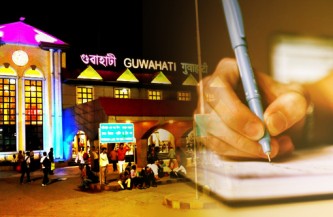How the Government has been serving the Poor and Marginalized for the last 8 Years

Prime Minister Narendra Modi’s government completed its 8 years on 30 May, 2022. The Modi Government dedicated these years to the growth of poor and marginalized sections of the society. His government has worked to give social justice, equality, respect, and equal opportunities to all citizens. Empowering every citizen to make India win against poverty is his aim. His strategies and policies have extensively supported the underprivileged. His government has provided 10% Reservation for Economically weaker Sections (General Category), Rs. 22.6 lakh crore has been directly transferred to beneficiaries i.e. Direct Benefit Transfer (DBT). Moreover, the constitutional status is also given to the OBC Commission.
Prime Minister Jan Dhan Yojna, (PMJDY) was launched on 15 August, 2014 and is run by the Department of Financial Services, Ministry of Finance. It has brought more than 45 crore people into formal banking. Sansad Adarsh Gram Yojna, (SAGY) was launched on 11 October, 2014, which has led to the social and cultural development in villages. This scheme aims to translate the comprehensive vision of Mahatma Gandhi about an ideal Indian village into reality. Gramoday se Bharat Uday, (GBU) launched on 14 April, 2016, emphasizes the development of villages for the proper development of the country. Pradhan Mantri Garib Kalyan Anna Yojna, (PMGKAY) is a Food Security Welfare Scheme inaugurated on 26 March, 2020. It strives to feed the poorest citizens of the nation through the Public Distribution System (PDS) to all the ration card holders and those identified by the Antyodaya Anna Yojana scheme. 80 crore people have profited from this scheme and delivered with free food grains. 5 kg of rice or wheat (as per regional dietary preferences) per person and 1 kg of dal to each family holding a ration card is provided under PMGKAY. Garib Kalyan Rozgaar Abhiyaan, (GKRA) began on 20 June 2020, for the returnee migrant workers and rural citizens to empower them and provide employment. This scheme was able to employ the migrant workers by focusing on the implementation of 25 different types of work and created an infrastructure in the rural areas of India with a resource envelope of Rs 50,000 crore.
Atal Pension Yojana, (APY) which provides a monthly pension for people from the unorganized sector between 18 to 50 years, was launched on 9 May 2015. PM Ujjwala Yojna, (PMUY) inaugurated on 1 May 2016, has delivered more than 9 Crore free LPG connections to BPL families at subsidized rates. Pradhan Mantri Street Vendor’s Atmanirbhar Nidhi scheme, (PMSVA Nidhi Scheme) inaugurated on 1 June, 2020 helped the street vendors resume their livelihood activities who were impacted by COVID-19. It facilitated loans to working capital up to Rs. 10,000 at a subsidized rate of interest. Pradhan Mantri Awas Yojana (PMAY) constructed more than 3 Crore houses and provided them at an affordable price to the deprived section of the country. PM Jan Arogya Yojna, (PMJAY) inaugurated on 23 September, 2018 aims to provide Rs. 5 Lakhs per family per year for free and quality healthcare services to vulnerable families. The number of beneficiaries is around 14 crores. Today every household has a water facility and it is due to the Jal Jeevan Mission under which 50% of households got water connection.
No doubt, whatever development in a nation happens, a leader plays a vital role to make it possible. But the role of the citizens is extremely extraordinary. A leader can only show the path and provide guidance but it is the citizens who make it possible and make a nation grow and take it to great heights. Prime Minister Narendra Modi has dedicated his life to the welfare of the poor. But it is the people who are trusting him and making his as well as their dreams possible.
2) years of Modi government: A look at some of the big achievements
The last three years in office in the second term have been full of challenges that were overcome with decisive leadership and strong political victory.
Prime Minister Narendra Modi-led government marked its eighth year in office on Monday.
PM Modi has been leading the country since 2014, and in his second term, he was able to ensure that his party won the faith of the people by an even bigger margin.
The last three years in office in the second term have been full of challenges that were overcome with decisive leadership and strong political victory.
Here are the Major Achievements • On August 5, 2019, Union Home Minister Amit Shah passed the Bill in Parliament to abrogate Article 370 and to bring the Union Territory of Jammu and Kashmir and Ladakh in the mainstream. Article 370 which gave special status to Jammu and Kashmir was abrogated. The government also announced the split of the state into two Union Territories of Jammu and Kashmir, and Ladakh.
- The construction of Ram Temple was in the manifesto of the BJP and the poll promise is now well on its way to being fulfilled. PM Modi laid the foundation stone of the new Ram Temple in August 2020 and as per the latest information available, it will be ready by 2023. It is set to be inaugurated on January 24, 2024 just a few months before the next elections. BJP is proud that Ram Lalla will be reinstated in the garbha griha fulfilling the emotions of crores of Hindus.
- India marks its 75th year of independence the government has launched an umbrella programme “Azadi Ka Amrit Mahotsav” that is being celebrated across the country recognizing all those who contributed to India’s struggle for freedom. The campaign highlights the contribution of unsung heroes of the nations.
- Right from programmes being organized by the Ministry of Culture to the Film Festival at Cannes where India was the Country of Honour, India has shown its prowess as a democracy and also demonstrated its rich cultural heritage.
- It was during the first wave of COVID that PM Modi announced free ration for the marginalized section of society. The scheme was then extended during the second wave and was extended for another six months till March 2022. Through this scheme, 80 crore beneficiaries were given free ration each month.
- Prime Minister Narendra Modi’s government launched the nationwide vaccination programme in the tough times of COVID-19. Said to be the world’s largest vaccination drive, India so far administered over 193 crore doses of the COVID vaccine. The country has also managed to vaccinate most of its adolescent population between 15 to 18 years of age. India has also been successfully running its campaign for precaution dose to its adult citizens.
- India developed indigenous vaccines in the shortest time. The country not just vaccinated its population but has also extended a helping hand to neighbouring nations by providing vaccines through the Vaccine Maitri scheme.
- Ayushman Bharat Pradhan Mantri Jan Arogya Yojana is a national public health insurance fund of the Government of India that aims to provide free access to health insurance coverage to low-income earners in the country. More than 22 crore people have registered in the scheme.
3) “Mere good governance is not enough; it has to be pro- people and pro- active. Good governance is putting people at the centre of development process.” – PM, Narendra Modi
India is one of the fastest growing economies of the world and with PM Narendra Modi’s idea of ‘Sabka Saath, Sabka Vikas, Sabka Vishwas, Sabka Prayas,’ it has been widening its positive influence in the world affairs. A leader, a visionary, a statesman, Narendra Modi’s led BJP government completed 8 years in office on 30 May, 2022 and these eight years of his active leadership have turned out to be a guiding light in moulding different domains of the Indian society.
From Swachh Bharat Mission, Jan Dhan Yojana, Ujjwala Yojana to Ayushman Bharat Pradhan Mantri Jan Arogya Yojana, Startup India, to name a few, his historic decisions and policymaking ideas have weaved India into a newer outlook in front of the world- a strong developing nation. He has brought newer concepts to limelight along with the notable schemes which have seeped into the deeper levels of the Indian societal structure- financial, healthcare, social security.
Aiming to bring financial inclusion of all households, Pradhan Mantri Jan Dhan Yojana launched in 2014 turned out to be a great success, with about 44.05 crore bank accounts being opened so far. This level of impact is not just limited to one scheme, it amplified the mission of helping the people, especially the poor to other schemes as well. Under Swachh Bharat Mission, 10.9 crore toilets were built whereas under PM Awas Yojana, over 3 crore urban and rural houses were constructed. The schemes in different domains aided in improving the livelihood of people, thereby helping them to link with basic amenities, better facilities, skills and opportunities. In order to expand the level of insurance penetration in the country, PM launched Pradhan Mantri Jeevan Jyoti Bima Yojana, Pradhan Mantri Suraksha Bima Yojana in 2015 and ever since, it has been instrumental in making insurance cover accessible to common man. Another significant scheme, Ujjwala Yojana which was launched in 2016 has played a key role in providing free LPG connections to millions of people without consumers going through the hassle of paying deposits to fuel retailers. Later, Ujjwala 2.0 was launched to encompass more people into the radius of the scheme. Along with a deposit free LPG connection, it aimed to provide free refill and hotplate to the beneficiaries.
The flagship schemes have helped in solving different socio- economic problems that have characterised the Indian society. For example, the idea of alleviating poverty and generating employment opportunities was met through Skill India scheme which has created an empowered workforce by providing industry relevant skills for free. The schemes have aided in improving the quality of life of the citizens. Ayushman Bharat Pradhan Mantri Jan Arogya Yojana, a national public health insurance fund of government of India witnessed the registration of more than 22 crore people, thus moving a step closer to provide free insurance to low- income groups which was the overall objective of the program. Dedication, creative concepts, new blueprints have helped in making the PM’s vision of India a reality. Under Jal Jeevan Mission, 6.29 crore of tap water connections were made while under PM SVANidhi scheme, 31.9 lakh street vendors got loans. Another scheme, PM Garib Kalyan Yojana launched during 1st wave of covid and extended later, provided more than 80 crore people free foodgrains, thereby staying true to its name and providing food security to the people. These eight years of his remarkable leadership also witnessed flagship schemes centring women. Aiming to make women socially and financially self- reliant, several schemes ranging from Sukanya Samriddhi Yojana, a part of Beti Bachao Beti Padhao campaign to Poshan Abhiyaan were launched.
PM’s leadership and his service over these eight years has played a vital role in promoting the welfare of the poor people, empowering women, aiding the farmers through agri- friendly schemes, creating job opportunities for the youth, upskilling people and thereby ameliorating the Indian economy at large. These reforms have moved way beyond the statistics and the positive impact of them could be seen on the smiling faces of people.
[These are 3 different blogs collated as a single blog written by our MyGov Interns Anshika Rajput, Aaron and Amisha respectively.]





